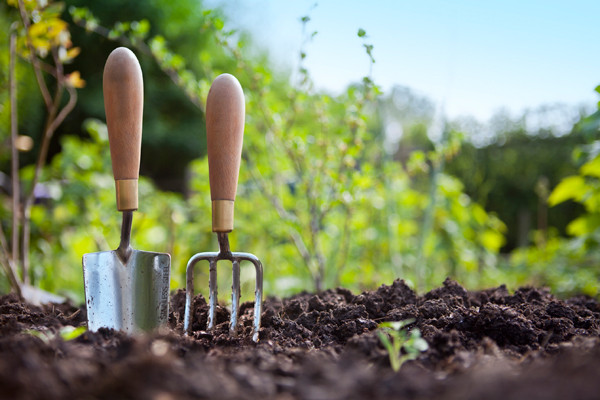After a season of enjoying the blooms from your perennial flower garden, late fall is the time to prepare the beds for winter.
Putting the garden to bed for the winter is mostly a matter of cleaning up and covering up. As fall progresses and temperatures drop, plants are preparing for dormancy.
Stopping the fertilizing of perennials in late summer and slowly cutting back on watering will encourage the plants to slow their growth and harden off for winter. New growth is not encouraged late in the season as any new buds destined for spring will die off in the cold winter weather.
Clear Out and Cut Back
Clearing out the blackened stems and foliage of annual flowers and vegetables will help prevent the possibility of them harboring disease and insect eggs over the winter. On perennials that have finished for the season, cut back the stems 6 to 8 inches from the ground.
It can be tempting to leave dead or dying plants where they are for the moment and clear up what’s left of them in the spring, but by doing so you will be lending a helping hand to many pests – slugs and snails for example will happily feast on this material, meaning they will be in the perfect place to start munching on your precious seedlings once the snow melts in the spring.
Nutrition
Fall is a good time to add in some nutrients for your perennials by working in a 4- to 6-inch-thick layer of compost (manure or organic matter) around the beds. The compost slowly breaks down, releasing the needed nutrients to plants and replenishing and improving the soil structure for winter maintenance.
While it appears as if all activity in the garden has stopped, there is still a lot going on under the soil until it freezes. Newly transplanted trees and shrubs, divisions of perennials and hardy bulbs are all growing roots and drawing on soil nutrients and moisture around them.
Don’t forget to dig up your tender bulbs (cannas, gladiolas and dahlias) as they won’t survive our cold winters. Once dug, spread them out in a cool place for them to dry for about a week, before packing them in a breathable container (cardboard box). Cover them in old newspaper and store them in a basement or garage for the winter.
Mulch
Most likely, the mulch you spread to protect the soil during the summer months has substantially decomposed. It is important to spread new mulch now – replacing the old mulch will also eliminate any disease or insects that have taken up residence there. The new mulch will add a thicker layer to protect the plants and insulate the soil and roots over the winter months.
The idea is not so much to keep the soil warm as it is to keep the temperature even and insulate the bed. Watering your plants after a hard frost, but before winter sets in will re-hydrate the plants so in the spring they will have enough moisture to begin their new growth.
Taking extra good care of your flower beds in the fall will help them thrive next spring and summer.


